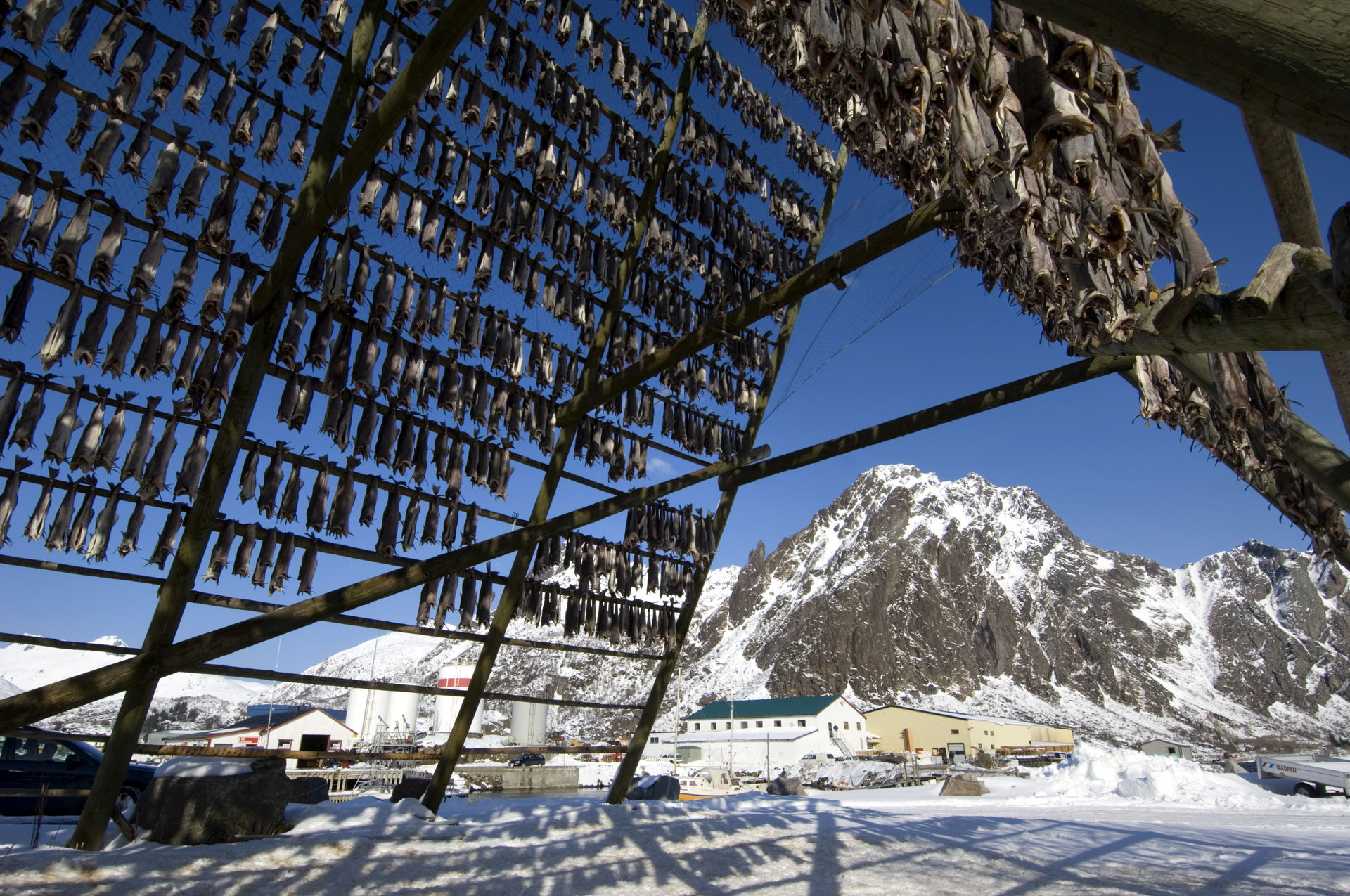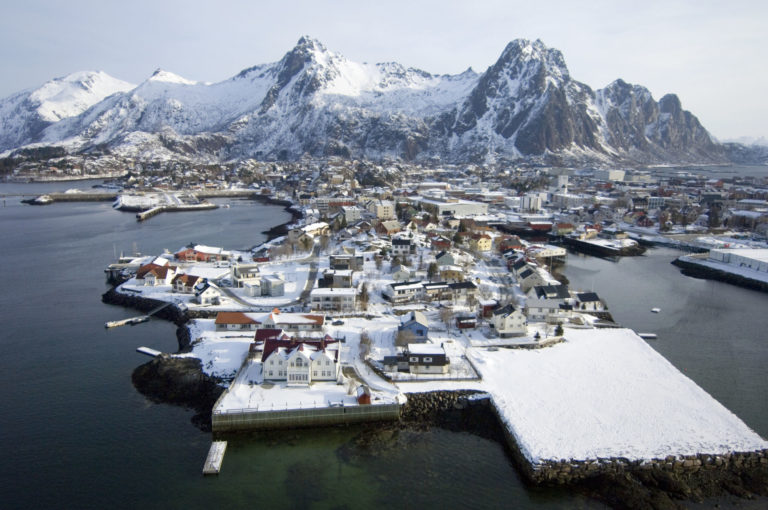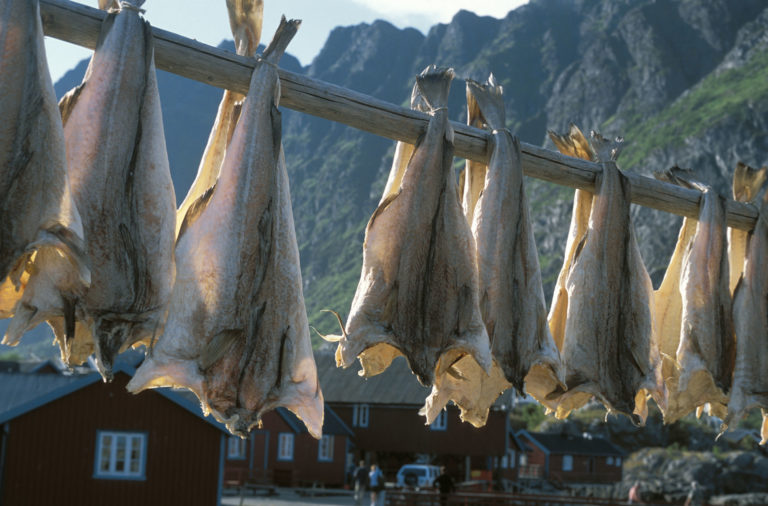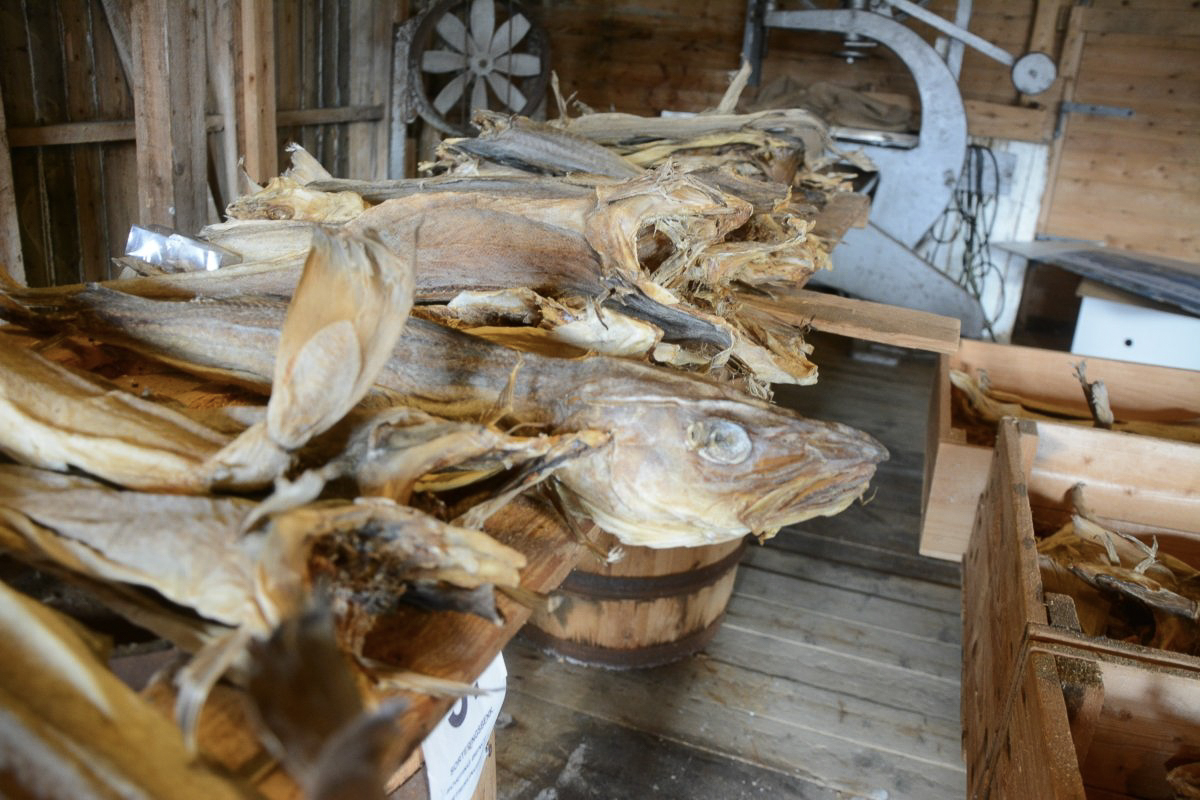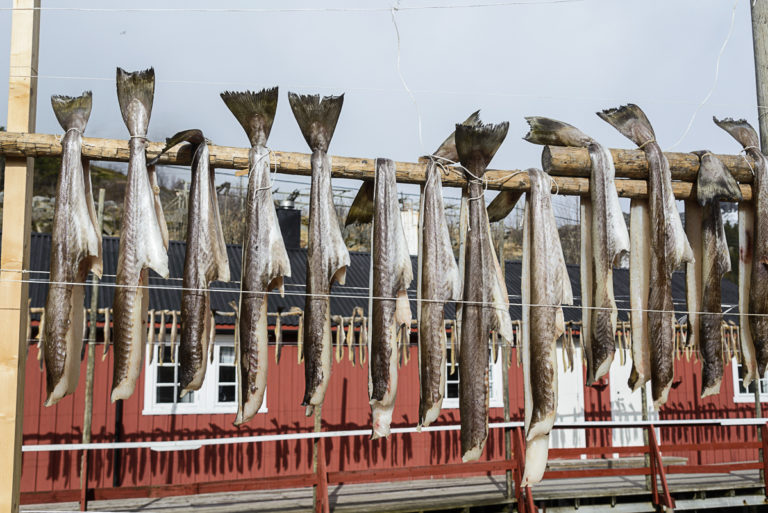The world’s richest cod-fishing takes place every winter in Lofoten. For nearly 1000 years, dried fish has been exported to Europe from here
When the temperate waters of the Gulf Stream enter the grounds around the Lofoten archipelago, the temperature is exactly right for the Norwegian Arctic cod to spawn. Large cod swim down from the Barents Sea in the middle of the darkest winter, and become known as skrei on the way. They reach the western coast of Finnmark and Troms before Christmas and get to Lofoten in January. Some spawn as far south as Trøndelag and Møre, but most of the spawning occurs between Røst and Lødingen, on the mainland side of the Lofoten archipelago.
The fish is dried to preserve it
In order to preserve the fish, it is dried on large drying racks. It doesn’t need to be salted or smoked, as the temperature in Lofoten in the winter is just below freezing. The fish does not freeze into pieces, but it doesn’t rot either. The fish simply dries in the sun and wind from late winter until spring. Then, it is bone dry and easy to transport but still retains its key nutrients.
Fish trading
The trade in stockfish between Lofoten and Europe began in the early 12th century. In the summer, large cargo vessels transported the dried fish to Bergen. The German Hanseatic merchants were waiting, and sold the fish on to the citizens of the thriving cities of northern Europe. Good Catholics eat fish on Fridays, and cod are rich in hearty proteins.
Cod prices cycle
In the 14th and 15th centuries, the Lofoten fishermen got very good prices. In the 16th and 17th centuries, competition increased and demand fell, and there were hard times along the coast. In the 19th century, demand increased again, and the coast got a boost that has lasted, with a few interruptions, until today. From the 19th century until around 1940, the Lofoten fishery made up the bulk of revenue for most fishermen in northern Norway. Today, most of the dried fish is exported to Italy, while airborne fresh fish is sold to fine restaurants throughout Europe.
Fishermen from along the coast
The Lofoten fishery was part of the annual rhythm of coastal people from Trøndelag and northwards. After Christmas, fishermen’s Lofoten chests were packed with dried food, warm clothing and hymnals as they left for Lofoten. They were away from home from January to March/April, depending on how the fishing went.
Fishermen`s shacks and markets
While they were in Lofoten, they lived in shacks — simple houses, where an entire crew lived in the same room. The boys were 14 years old and newly confirmed the first time they went out. Pedlars, photographers, liquor dealers, carousel owners, magicians and “less reliable ladies” also visited Lofoten during this period, in case the fishermen had earned a little extra.
